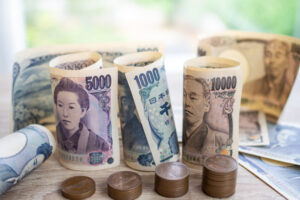Starbucks reports another quarter of declining sales, reaffirms guidance

Starbucks (SBUX) missed the mark on sales again as it reported its numbers Tuesday after market close.
Q3 revenue fell 1% to $9.1 billion, lower than expectations of $9.2 billion, per Bloomberg consensus estimates.
Global same-store sales declined for the second quarter in a row, down 3%, while overall foot traffic fell 5%.
Adjusted earnings per share came in at $0.93, compared to estimates of $0.92.
In an earnings call, CEO Laxman Narasimhan called the current consumer environment “complex,” saying the company is doing all it can to regain its footing as a premium player.
He added that he has “full confidence in the long-term potential of Starbucks worldwide.”
“We are not satisfied with the results, but our actions are making an impact,” he said. Key indicators are “trending in the right direction … and our runway for improvement is long.”
Starbucks is implementing a three-part action plan for the US that was introduced following its lackluster Q2 results.
It includes getting more customers throughout the day, launching new items while “maintaining our focus on core coffee forward offerings,” and providing more value.
While Starbucks missed its earnings numbers, the results were still better than feared, and with a reaffirmed guidance, its shares were up nearly 6% in after-hours trading.
The company is facing plenty of challenges in the US.
Same-store sales declined 2%, while the average check is up 4%, driven by menu price increases and “promotional offers,” CFO Rachel Ruggeri said on the call.
Foot traffic dropped 6%, which the company said was mostly due to non-rewards members.
“We are operating in a challenging consumer environment,” Narasimhan said of the steep decline. “We see volume increase at home in our ready-to-drink business” as consumers opt for groceries over eating out.
This quarter, the company rolled out new items like popping boba-like pearls and iced energy drinks, which led to the highest week-one product launch in its history.
Cold drinks now make up 76% of total beverage sales in the US.
It also launched a limited-time “pairing menu,” which allows customers to get a small iced or hot coffee with a butter croissant or breakfast sandwich for $5 or $6.
Executives said the promotions drove active reward members in Q2, which were up 3% from Q2 to 33.8 million, but it has yet to return to the 34.3 million in Q1.
“Cyclical macro issues” may be to blame for Starbucks’ struggles, per a note from Baird analyst David Tarantino prior to the results. He anticipated softness in the majority of fiscal 2024 sales as consumers pull back on discretionary spending, which could affect afternoon purchases at Starbucks. He has a Hold rating on shares.
Narasimhan said demand for the pearls was ahead of expectations, and they had to pull back marketing since it ran out of supply, adding that “afternoons are an opportunity for us.”

Its second-largest market, China, saw the biggest drop of all Starbucks segments.
Same-store sales fell 14% compared to last quarter when they were down 11%.
Foot traffic there fell 7% and so did the average check size. The company attributed this decline to “more cautious consumer spending and intensified competition in the past year … and a mass segment price war.”
Narasimhan said the team is in the “very early stages” of exploring joint ventures and strategic partnerships in technology, real estate, and supply chain.
In a note to clients, Bank of America analyst Sara Senatore said Starbucks’ performance in China is tied to industrywide struggles.
“Intense competition is the natural state of restaurant markets and even the strongest brands are not insulated,” she said. “The direction of SBUX’s China same-store sales growth is strongly correlated with those of other global brands. And all are correlated with macro factors (GDP).”
Bernstein analyst Danilo Gargiulo said franchising may be the way to go to lessen capital expenditure and exposure to volatile macro conditions.
The company still aims to have 9,000 locations in China by 2025, from its current 7,306 stores.
This earnings report comes as pressure is mounting from activist investor Elliott Investment Management, which took an undisclosed stake in the company, according to a report from WSJ.
On the call, Narasimhan confirmed that “Elliott Management is a shareholder in our company, and our conversations to date have been constructive.”
Some on the Street, like Gargiulo, are wondering if this could light a fire under Starbucks.
“Investors have questioned Elliott’s experience and track record in the consumer sector, we believe that an external nudge may accelerate making bold decisions and may offer interesting risk-reward opportunities for long-term investors willing to accept that a turnaround may take time,” he wrote in a note to clients.
Here are 10 items Gargiulo believes the Elliot team would prioritize.
Earnings breakdown
Here’s what Starbucks reported, compared to estimates based on Bloomberg consensus data:
Revenue: $9.1 billion versus $9.2 billion
Adjusted earnings per share: $0.93 versus $0.92
Same-store sales: -3% versus -2.71%
Foot traffic: -5% versus -4.27%
Ticket Growth: 2% versus 1.98%
The company reaffirmed its 2024 guidance, which it revised following Q2, for the third time this fiscal year.
It expects 2024 global revenue growth of low-single digits, down from the previous range of 7% to 10%, which itself was down from a prior guidance of 10% to 12%.
Global and US same-store sales are expected to see a low single-digit decline or stay flat, down from the previous range of 4% to 6% growth. China’s same-store sales are expected to see a single-digit decline, down from the previously expected low-single-digit growth.
Starbucks declined to make CEO Laxman Narasimhan and CFO Rachel Ruggeri available for interviews.
—
Brooke DiPalma is a senior reporter for Yahoo Finance. Follow her on Twitter at @BrookeDiPalma or email her at [email protected].








